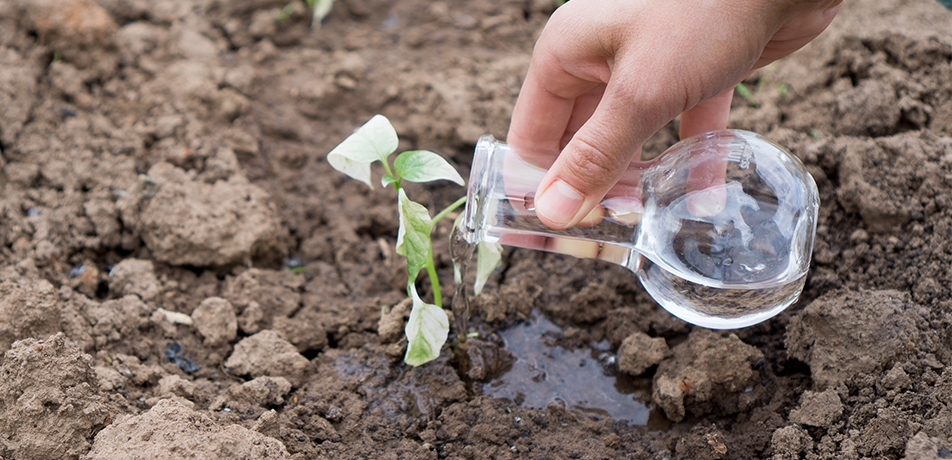Making desert research bloom
The Plant Microbiome Project takes root in Israel’s Arava desert
Briefs

In recent years, plant microbiota—the bacteria and fungi found on flowers, soil, roots, and leaves—has been receiving growing attention, as scientists learn more and more about the significant role these elements play in ecosystems, from influencing plant growth to providing protection from invading pathogens.
However, because of under-sampling and lack of research, the scientific community’s knowledge of plant microbiota in many types of terrain, such as the desert, is limited. Unearthing this domain could reveal an untapped resource as rich as the soil beneath it—the discovery of bacterial and fungal species that could lead to the development of improved biotechnological tools and methods, with implications for personalized human medicine.
Launched in 2018, the Plant Microbiome Project is a collaboration between Prof. Ziv Reich of the Department of Biomolecular Sciences, and the Davidson Institute of Science Education. (Prof. Reich is also Vice President of the Weizmann Institute.) Also participating in the project is Dr. Noam Shental from the Computer Science Department at the Open University. The project’s mission is ambitious: to compile a complete genomic library of the region’s plant microbiome.
The impact of the Plant Microbiome Project reaches beyond Israel’s borders. By partnering with Jordanian schools on the other side of the Dead Sea and working together toward a common goal, the project opens lines of communication and encourages camaraderie between Israel and its neighbors. The researchers include Weizmann scientists and graduate students, as well as Israeli and Jordanian school teachers and students, who take a leading role in studying, collecting, and processing the bacterial and fungal species found in the peripheral desert regions of Israel and Jordan.
In its first year, the project started in collaboration with the Central and Northern Arava R&D, led by Dr. Oded Keynan. The center recruited 40 teachers and more than 100 students, who gathered samples in easy-to-use collection kits and recorded environmental parameters such as temperature, light intensity, and humidity. Students and teachers alike dove deep into molecular biology, ecology, chemistry, and more, enriching their knowledge and understanding while actively participating in relevant, real-time scientific research.
The first sample went to Prof. Reich’s lab for analysis. Using gene sequencing to identify and differentiate between closely related species, his lab team is now gathering and organizing the genetic information of the collected bacteria and fungi, and integrating them into a custom pipeline. They will make the information publicly available, providing scientists from other fields with tools that can be used for a variety of basic and applied research.
“The databases that currently exist are heavily skewed towards human microbiota: 82% is human-oriented bacteria,” says Dr. Dagan Sade, a researcher in Prof. Reich’s lab. “We want balance. By enriching the database with environment-oriented bacteria, we can learn about new species and potentially bring about new agricultural, eco-friendly, and pharmaceutical developments to help the world we live in.”
Bacteria and bridges
In addition to creating a comprehensive microbiome database, the program offers a wholesome, educational experience for schoolchildren and teachers alike—an activity where they can come together, interact, and learn from top scientists—all while giving back to the community. The goal is to reach 2,000 participants in the next two years—and to complete the database.
“We are embarking on an expedition to bring to light the natural microbial world of plants while educating the next generation of scientific explorers,” says Prof. Reich. “I believe that this is a terrific example of community science at its best.”
Dr. Liat Ben-David, CEO of the Davidson Institute of Science Education, says: “This kind of collaboration is science education at its best. It’s the creation of scientific exploration through the collective, holistic work of scientists, science educators and students, building knowledge and understanding for all, together.”
Dr. Michal Stolarsky-Ben-Nun, project head at Davidson, adds: “The project is an exciting opportunity to connect scientific research and the educational world, allowing students and teachers to take part in contemporary research and study science in a creative and interesting way with relevance to everyday life.”
“It was a powerful and special experience,” says student Hila Lozdernik. “We received a kit with test tubes, gloves, and all the necessary equipment, as well as a booklet that explained exactly how and where to take samples. We went out into nature, learned about different plants, geographical areas, and types of climate. It showed me another side of science and research.”
Says Shiri Orlitsky, another student, the project “gave me a taste of the impressive world of biology and provided me with an opportunity to get to know science in a different and applicable way. I wish everyone could have such an amazing experience.”

A joint research group working on the Plant Microbiome Project







